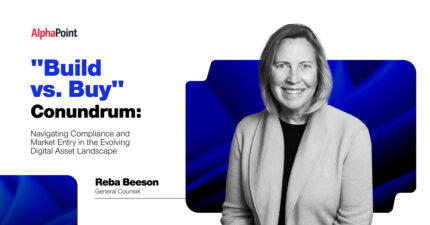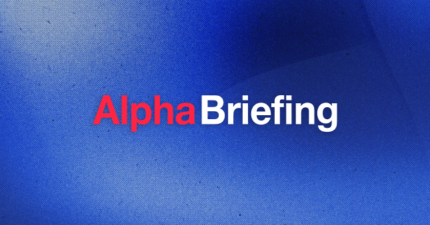How To Upgrade Your Digital Asset Exchange Technology
Digital asset exchanges provide institutional investors with a convenient avenue for buying, selling, and trading all kinds of cryptocurrencies. As such, the creators of these platforms must diligently use state-of-the-art technology to keep user data, privacy, and customer currencies secure.
Hackers can exploit the slightest weaknesses in digital asset exchange technology. In 2018, the Tokyo-based exchange Coincheck experienced the largest crypto hack in history, losing more than $500 million in cryptocurrencies to hackers.
If you want to avoid this outcome, it’s essential to realize where your digital asset exchange infrastructure is falling short. This guide will help you determine how to upgrade your digital asset exchange technology and reduce its technical vulnerabilities.
Start by Finding Weak Spots in Your Core Systems
The first step in updating a digital asset exchange is finding its current weaknesses. Pinpointing these vulnerabilities can help boost the operational efficiency and security measures of your system.
Ultimately, you’ll need to assess the weaknesses of your exchange’s hardware and software. This can be done by analyzing user behavior, feedback, and data. Let’s explore how to conduct a comprehensive system audit in detail below.
Step 1: Identify Performance Bottlenecks in Your Current Setup
Poor system performance can hamper the reputation of your business and push potential customers into the arms of your competitors. For this reason, you should closely monitor key performance metrics such as transaction speeds and server response.
Both indicate the digital health of your platform and its ability to deliver world-class financial services without any interruptions.
If you’ve built your digital exchange software from the ground up, it can be difficult to review extensive performance analytics without building an add-on solution. With AlphaPoint, you can rely on our battle-tested digital asset exchange technology and platform performance monitoring for a variety of ongoing analytics to ensure smooth operations, security, and to make informed business decisions.
In addition, AlphaPoint monitors client production environments in real time, alerting on numerous potential concerns and providing 24/7/365 support in areas like KYC, AML, and 2FA.
Step 2: Conduct Security Audits to Identify Vulnerabilities
Keeping customer data and privacy safe isn’t just ethical, but it’s also a legal requirement for crypto businesses in major countries like the United States and the UK.
To promote rigid cybersecurity measures, your digital exchange will need to undergo both internal and third-party security assessments. The purpose of these assessments is to gauge the risk levels of your own software and that of your affiliates.
With that said, here are some things to keep in mind when running a security audit:
- SQL injections: An SQL injection happens when a hacker inserts malware into a website’s database to gain unauthorized entry. Once inside, the hacker can alter and steal proprietary data, while denying service to authorized users.
- Cross-site scripting (XXS): Similar to an SQL injection, hackers use this method to insert malicious executable scripts into an application. To begin, a hacker will usually send a malicious link to a user and entice them to click it.
- Regular review schedules: Fortunately, you can prevent SQL injections, XXS attacks, and other cyberattacks through a manual audit. By setting up regular security review schedules, you can eliminate vulnerabilities before your system becomes compromised.
When it comes to online security, failing to plan is essentially planning to fail. It’s important to stay proactive in performing both manual and automatic system reviews to eliminate vulnerabilities immediately.
Step 3: Study Data To Understand User Behavior and Needs
Studying user behavior and trends is pivotal in making data-driven decisions about the current standing of your digital asset exchange. Fortunately, there are several tools you can use to derive insightful data and metrics about the performance of your software.
Some of the best user testing tools are:
- Hotjar: This is a popular web tracking platform well-known for its visual representation features, which include heatmaps and user session recordings. Custom web applications can use the Hotjar API to bring their user functionality in-house.
- Kissmetrics: This user behavior analytics platform offers a comprehensive suite of new features to help companies learn more about their audience. This data can help you reduce churn rates and increase your customer lifetime value (CLV).
- Google Analytics: This is one of the world’s most popular online analytics tools. Specifically, Google Analytics 4 (GA4) has evolved to provide helpful analytics and data on web applications and mobile apps.
- Crazy Egg: This service enables businesses to track and analyze user data through a combination of heatmaps, A/B testing, traffic analysis, and session recordings.
- Tableau: This tool can measure client exchange performance and show you interactive and dynamic visualizations to highlight insights and trends. It also allows you to build custom dashboards to track performance, key metrics, and changes over time.
Using any of these tools will help you track user behavior and make data-driven decisions to give them the best possible experience.
Adopt New Blockchain Tech for Better Performance
Blockchain technology is commonly used in digital asset architecture. Thus, it’s essential to stay ahead of the latest blockchain innovations to keep your systems up to date.
In fact, incorporating modern blockchain technology can significantly improve transaction speeds, reduce costs, and enhance scalability. Here are some ways you can use established and emerging blockchain technologies to augment your software:
Using Faster Blockchain Types for Quicker Transactions
The most successful digital asset exchanges thrive because of quick transaction speeds. This ensures that customers are able to change positions in little time, which is a positive for the entire crypto ecosystem.
To deliver quicker transaction speeds, you should consider switching to newer blockchain technologies like Solana or Polkadot. Both are significantly faster than Bitcoin, offering lightning-fast network speeds with lower fees.
Safe Data Storage With Decentralized Technologies
Modern blockchain technology contributed to the popularity of decentralized storage. This storage method enables users to store data across various nodes in a distributed network.
Unlike centralized data storage, sensitive data is fragmented to enhance data security, privacy, and scalability. As a result, fragmentation spreads data across multiple servers to reduce overloads and improve load balancing.
Digital asset exchanges can leverage the InterPlanetary File System (IPFS), a decentralized peer-to-peer (P2P) file-sharing system, to scatter sensitive data across a secure network.
Adopt Layer-2 Solutions for Scalability
As your exchange begins to grow, you may need to direct excess transactions off the main blockchain to increase network speeds and eliminate congestion. One way you can do this, without compromising network security, is by leveraging layer-2 solutions.
Layer-2, or a data link layer, is any off-chain network that’s built on top of a blockchain. In doing so, the blockchain can scale to manage rampant transactions and keep user data secure. Two of the most well-known layer-2 solutions are:
- Lightning Network: This is a decentralized payment protocol built on the Bitcoin blockchain that uses smart contract functionality to process instantaneous payments for very low fees.
- Plasma: Plasma is a network of independent “child chains” added to the Ethereum blockchain. Its design offloads the computational strain and bandwidth from the Ethereum blockchain while keeping its security intact.
Increasing the number of transactions across your blockchain network is an indicator of business success. It’s important to manage this success by utilizing layer-2 solutions to keep your networks efficient and secure.
Streamline User Interaction and Compliance
An excellent digital asset exchange platform combines a world-class user interface (UI) with adherence to local and global compliance standards. Simply put, the best digital asset platforms are both visually appealing and legally compliant.
Here are some tips to strike a balance between user-friendly features and rigorous security protocols:
Creating a Simple, Effective User Interface
To maximize user engagement, digital asset exchanges should utilize a functional and aesthetically pleasing UI. Here are some ways you can build a UI that delivers an exceptional experience to your customer base:
- Promote intuitive navigation: This refers to the ease with which people can find what they’re looking for. Creating clear and concise navigation helps guide people through the user journey conveniently and logically.
- Focus on minimalistic design: Minimalist websites allow you to avoid excessive components. This intentional website layout strategy focuses on the most essential web elements, limited colors, high functionality, and ample whitespace.
- Accelerate loading times: It’s no secret that internet users hate slow loading times. By optimizing website images, limiting external scripts, and using a content delivery network (CDN), you can gradually increase your platform’s loading speed.
Focusing on these core areas is pivotal to developing a user interface that meets your organization’s performance goals.
Stay Ahead With Compliance Updates
Crypto governance standards change every year. Depending on your jurisdiction, you may be subject to varying compliance standards. As such, it’s essential to stay on top of compliance updates to reduce your legal liability and uphold your business’s reputation.
Setting up alerts from financial regulatory bodies in your region can help you avoid non-compliance. For example, the most prominent financial regulatory bodies in the U.S. are:
- Department of the Treasury
- U.S. Securities and Exchange Commission
- Consumer Financial Protection Bureau
In the U.K.:
- Prudential Regulation Authority
- Financial Conduct Authority
In the EU:
- European Central Bank
- Single Resolution Board
- European Banking Authority
- European Securities and Markets Authority
In Australia:
- Australian Prudential Regulation Authority
- Australian Securities and Investments Commission
Many of these governing bodies provide subscribing opportunities so financial institutions can receive around-the-clock announcements and updates.
Build Stronger Identity Checks and Fraud Prevention
An intuitive UI isn’t just aesthetically pleasing. A digital asset exchange should employ advanced verification processes to prevent fraud. To accomplish this goal, you can integrate anti-fraud mechanisms, such as:
- Biometric checks: These checks are tied to a person’s fingerprints, facial patterns, and voice. Because of this, biometrics are one of the most identifiable and unique traits of a person, which are difficult for hackers to replicate.
- Two-step verification: Two-step verification entails setting up two different verification protocols when suspicious login activity is detected. Usually, this requires the user to enter the code sent to their smartphone or email address.
- Know Your Customer (KYC): This is a comprehensive identity verification method that requires a user to submit personal documents and sensitive information before creating an account. KYC is a baseline compliance standard in the crypto industry, and AlphaPoint offers clients integration opportunities with leading service providers like Sumsub and Jumio.
With these defense protocols in place, you can protect customer data, maintain rigid compliance, and uphold financial transparency.
Use Cloud Solutions for Scalable Growth
Businesses use the cloud for all kinds of operations, from disaster recovery to software development. For a digital asset exchange, cloud computing offers a scalable and efficient means of launching the entire platform.
Instead of buying and owning multiple data warehouses and servers, you can operate an entire web application using cloud computing. There are three types of cloud computing models available:
- Private: Private clouds are hosted on hardware the user owns.
- Public: This is a shared hosting environment, which includes services like Amazon Web Services (AWS) or Microsoft Azure.
- Hybrid: This is a combination of both private and public cloud hosting. Hybrid clouds offer maximum flexibility for users who value scalability.
The right model for you will ultimately depend on your business needs. For example, a startup may choose public cloud computing as a more affordable solution. On the other hand, a massive crypto trading platform may choose a private cloud network to receive near-unlimited bandwidth.
Before investing in these services, here is everything you need to know about cloud computing:
Why Choose Cloud Services for Flexibility and Growth?
Cloud services eliminate the need to purchase massive computational infrastructure. Because computer resources are distributed over an internet connection in real time, digital exchanges can scale their businesses more efficiently.
In addition, cloud services are faster than traditional computing services. This allows digital asset exchanges to better manage sudden traffic spikes and unprecedented business growth to expand their market reach.
How To Pick the Right Cloud Provider for the Best Efficiency
Not all cloud providers are created equal. Thus, when choosing a cloud provider, you should factor in criteria such as:
- Uptime
- Security features
- Compliance certifications
- Customer support.
On top of that, it’s best to select a provider that aligns with your operational requirements and geographic location.
Ensuring Your Cloud Setup Is Secure
Your cloud partner should be committed to preventing data breaches and maintaining user trust. To this end, they should offer industry-leading encryption, multi-factor authentication (MFA), and regular security audits to keep your data safe.
The top cloud computing providers publish their stance on web security on their websites. For example, Amazon Web Services provides in-depth information about its security solutions, as well as testimonials that prove its value.
Upgrade Your Platform with AlphaPoint’s Cutting-Edge Technology
The importance of maintaining an efficient and secure digital asset exchange can’t be overstated. With AlphaPoint, you can get a robust, battle-tested platform that continuously evolves to meet the ever-changing standards of the global financial industry.
AlphaPoint’s features include enhanced trading engines, liquidity solutions, and improved wallet security. We’re a proven name in the digital asset market, having developed digital asset software for El Salvador and other large financial institutions such as Wenia in the Latin American region.
The press secretary of El Salvador praised our services, saying, “The prestigious American company AlphaPoint has joined the effort to provide more technology and security to Chivo Wallet, allowing for financial access support to be even more effective.”
If you want to see how AlphaPoint’s technology can meet your specific needs, request a demo today.


